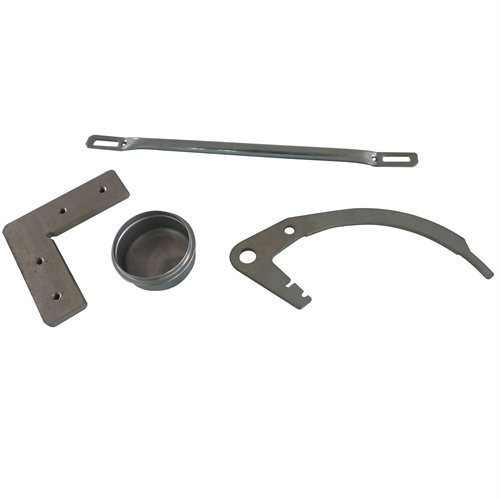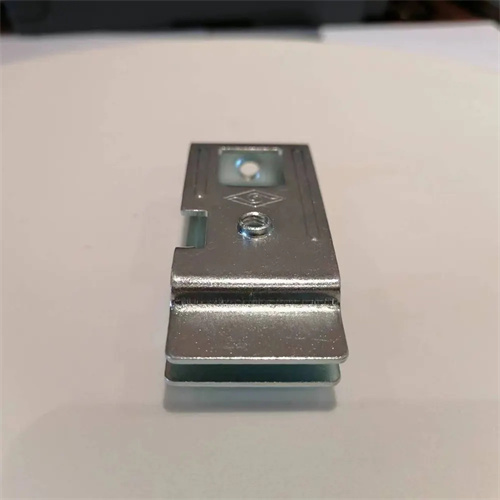Copper tape for cables
Cable copper tape is a type of copper tape used as a shield, armor, or conductor for cables. Due to its high conductivity, ductility, and corrosion resistance, copper plays a vital role in power cables, communications cables, and specialty cables. Its thickness typically ranges from 0.1-2 mm and its width from 50-600 mm, and it can be customized to suit cable specifications. It is typically made from T2 or T3 copper. T2 copper tape has a copper content of ≥99.90% and offers excellent conductivity, making it suitable for both shielding and conductor applications. In some applications, copper tape made from alloys such as Cu-Sn and Cu-Zn is used to enhance its strength and corrosion resistance, adapting to complex environments.

The production process for copper strip for cables requires precision steps, including smelting and casting, hot rolling, cold forming, annealing, and surface treatment. First, electrolytic copper with a purity of at least 99.95% is smelted in an industrial frequency induction furnace at a controlled temperature of 1150-1200°C. A phosphorus copper deoxidizer is added to reduce the oxygen content to below 0.003%. An online degassing system removes hydrogen and impurities to ensure the purity of the molten copper. The ingots are then cast using a continuous casting process into copper slabs with a thickness of 10-30 mm. During the casting process, the cooling rate is controlled to refine the grain size and avoid the formation of pores and inclusions. Hot rolling heats the slabs to 800-900°C and rolls them through multiple passes to a thickness of 2-5 mm. The reduction and speed are controlled during hot rolling, with each pass achieving a reduction of ≤40% to ensure uniform microstructure and a smooth surface. Cold rolling is a key step in determining the dimensional accuracy of copper strip. A multi-roll cold rolling mill is used to roll the strip in multiple passes, with a reduction of 15%-25% per pass, gradually reducing it to the target thickness. Emulsion lubrication and cooling are used simultaneously to ensure a thickness tolerance of ≤±0.01 mm, a width tolerance of ±0.5 mm, and a surface roughness Ra ≤0.8 μm. Annealing is performed according to performance requirements: heating to 300-500°C under nitrogen, holding for 2-4 hours, and then slowly cooling. This reduces the copper strip’s hardness to HV60-100 and its elongation to ≥25%, meeting the requirements of subsequent bending, winding, and other processing. Finally, surface treatments such as cleaning and passivation are performed to remove oil stains and oxide layers. Passivation forms a protective film that improves corrosion resistance.

The performance characteristics of copper tape for cables give it irreplaceable advantages in cable manufacturing. First, high conductivity is the core advantage. The conductivity of T2 copper tape can reach more than 97% IACS, which can efficiently conduct current and shield electromagnetic waves. It can quickly conduct interference current into the earth in the cable shielding layer, with a shielding effectiveness of ≥85dB, ensuring the stability of signal or power transmission; second, excellent ductility facilitates processing and forming. Copper tape with an elongation of ≥25% can withstand large deformation during cold rolling, and can be easily bent, wound, welded and other operations. In cable manufacturing, it can tightly wrap the cable core to form a continuous shielding layer or armor layer; third, good corrosion resistance ensures long-term stable operation. The oxide film formed on the surface of the copper tape can resist corrosion from the atmosphere, fresh water and other environments, and its service life can reach 30 days in a dry environment. Copper strips treated with tin or galvanizing for more than a year have better corrosion resistance and are suitable for humid and coastal environments; fourthly, they have high dimensional accuracy. Through precision cold rolling and online testing, the thickness and width tolerances of the copper strips are small, which can ensure the consistency of the cable structure and avoid unstable shielding or conductive performance due to dimensional deviation; fifthly, they have good welding performance. The copper strips can be firmly connected by resistance welding, brazing, etc., and the weld strength is ≥ 80% of the parent material strength to ensure the continuity of the shielding layer.

Across various application scenarios, copper tape for cables is a crucial component of all types of cables. In the power cable sector, the metal shielding layer of high-voltage cross-linked polyethylene (XLPE) cables utilizes a thin copper tape (0.1-0.5 mm thick) that wraps around the insulation layer, conducting fault currents to the grounding system while also shielding the electric field. For example, 220kV cables commonly utilize T2 copper tape with a width of 100-200 mm. In the communications cable sector, the shielding layer of coaxial cables utilizes a 0.05-0.2 mm copper tape, which is wrapped longitudinally or wrapped to form a closed shield, reducing electromagnetic interference and ensuring signal transmission quality. In the specialty cable sector, the armor layer of submarine cables utilizes a 1-2 mm thick copper tape, providing both shielding and mechanical protection, resisting seawater pressure and corrosion. In rail transit cables, the shielding layer of vehicle cables utilizes tinned copper tape, improving corrosion resistance and welding performance, and adapting to vibration and humid environments. In the new energy cable sector, the shielding layer of photovoltaic and wind power cables utilizes weather-resistant copper tape to ensure long-term, stable operation in harsh outdoor environments.

Industry trends indicate that copper tape for cables is trending towards thinner, higher-strength, and more complex functions. Continuous breakthroughs in thin copper tape production technology have enabled the stable production of tape thicknesses below 0.05 mm, making it suitable for miniaturized cables and reducing material consumption. High-strength copper tape, by adding trace alloying elements (such as chromium and zirconium), achieves tensile strength exceeding 400 MPa while maintaining high conductivity (≥90% IACS), making it suitable for armored cables requiring high mechanical strength. Composite copper tape is becoming increasingly popular. For example, copper-aluminum composite tape combines the conductivity of copper with the lightweightness of aluminum, reducing cable weight and cost. Nickel-plated copper tape offers enhanced corrosion resistance and is suitable for high-temperature and high-humidity environments. Furthermore, the promotion of green production processes, using recycled copper raw materials and environmentally friendly passivating agents, reduces energy consumption and pollution during the production process, and has increased the copper tape recycling rate to over 95%. With the rapid development of ultra-high voltage transmission, 5G communications, and the new energy industry, demand for high-performance copper tape for cables will continue to grow, driving the industry to achieve greater breakthroughs in material research and development, process optimization, and performance enhancement.
